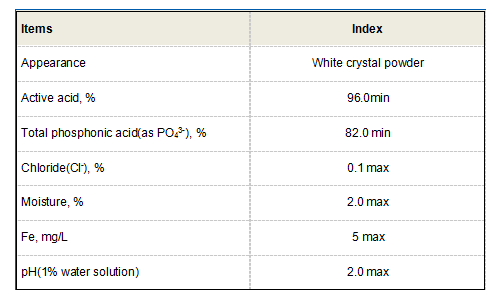flocculant chemicals for water treatment
Understanding Flocculant Chemicals for Water Treatment
Water treatment is an essential process that ensures the availability of clean and safe water for various uses, including drinking, industrial applications, and agricultural purposes. Among the key components in the water treatment process are flocculant chemicals, which play a critical role in the removal of suspended particles, colloids, and other impurities from water. This article aims to explore the significance of flocculant chemicals in water treatment, their types, and their applications.
Flocculants are chemical agents that promote the aggregation of smaller particles into larger flocs, which can then be easily removed from the water through sedimentation or filtration. The mechanism of flocculation involves neutralizing the electrical charges on particles, allowing them to come together and form larger clumps. This process is crucial in various stages of water treatment, particularly in clarification, where the goal is to enhance the quality of water by reducing turbidity and removing hazardous materials.
There are several types of flocculant chemicals, each with its unique properties and applications
. Some of the most common categories include organic polymers, inorganic coagulants, and natural flocculants.1. Organic Polymers These are synthetic compounds that are widely used in water treatment processes. They can be anionic, cationic, or non-ionic, depending on the charge they carry. Anionic flocculants tend to work well in alkaline conditions, while cationic flocculants are more effective in acidic environments. The choice of polymer largely depends on the specific characteristics of the water being treated, as well as the nature of the impurities present.
flocculant chemicals for water treatment

2. Inorganic Coagulants Commonly used inorganic coagulants include aluminum sulfate (alum) and ferric chloride. These substances work by destabilizing the charges on particles, allowing for their aggregation. Inorganic coagulants are typically effective for treating high turbidity water and can be advantageous because they are often less expensive and more readily available than their organic counterparts.
3. Natural Flocculants Derived from natural sources, such as plant extracts or microbial products, these flocculants offer an eco-friendly alternative to synthetic chemicals. One of the most well-known natural flocculants is chitosan, which is derived from chitin found in shellfish. Natural flocculants are becoming increasingly popular due to their biodegradability and low toxicity, making them suitable for applications in drinking water treatment.
The application of flocculant chemicals extends beyond municipal water treatment facilities. They are also employed in industrial processes such as paper manufacturing, mineral processing, and wastewater treatment in various sectors, including food processing, mining, and textile industries. In industrial wastewater treatment, flocculants help in the recovery of valuable resources and comply with environmental regulations by reducing the volume of sludge and minimizing the discharge of harmful substances into waterways.
While flocculants are highly effective in improving water quality, it is essential to consider their proper dosage and monitoring during the treatment process. Overdosing can lead to secondary pollution issues and increase operational costs, while underdosing may result in insufficient floc formation and ineffective removal of contaminants.
In conclusion, flocculant chemicals are vital agents in the water treatment process, contributing significantly to the production of clean and safe water. With various types available, selecting the right flocculant depends on several factors, including water composition, treatment goals, and cost considerations. As the demand for clean water continues to rise globally, the importance of flocculant chemicals in achieving efficient and effective water treatment cannot be overstated. By leveraging the benefits of these chemicals, we can ensure a sustainable and safe water supply for future generations.
-
Water Treatment with Flocculant Water TreatmentNewsJun.12,2025
-
Polymaleic AnhydrideNewsJun.12,2025
-
Polyaspartic AcidNewsJun.12,2025
-
Enhance Industrial Processes with IsothiazolinonesNewsJun.12,2025
-
Enhance Industrial Processes with PBTCA SolutionsNewsJun.12,2025
-
Dodecyldimethylbenzylammonium Chloride SolutionsNewsJun.12,2025





